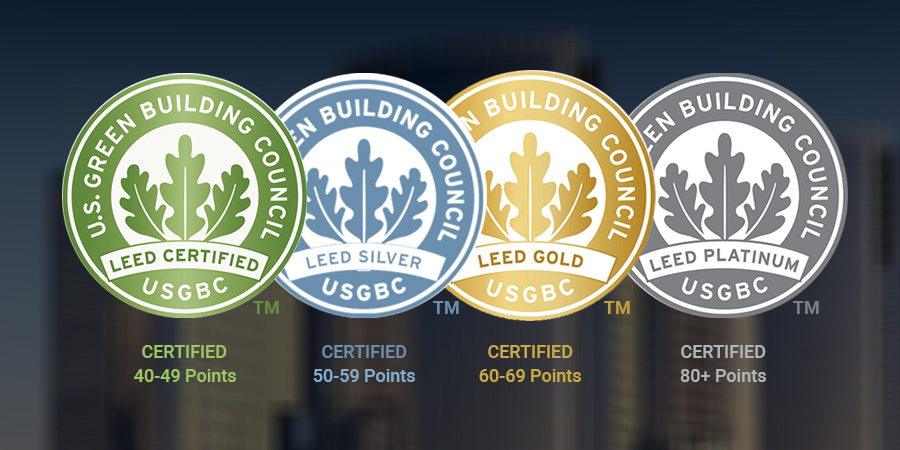Taking LEED for excellence

LEED stands for Leadership in Energy and Environmental Design and is among the leading green building certification programs. Developed under the guidance of U.S Green Building Council (USGBC), it lays out a framework for green development – rating system for design, construction, operation and maintenance of green (eco-friendly) buildings.
The main agenda behind LEED certification is to demonstrate their energy efficient and environmentally suitable management of elements within construction – design credits and construction credits. A simple explanation of design credit can be seen at large atria based malls or shopping structures. They have a translucent dome or spheroid panning out into a mushroom like umbrella which feeds in natural light during day and yet maintains ambient temperatures.
Construction credits can arise from using energy efficient materials that have superior insulation quality and are safer around humans and animals. Spray-on expanding insulation foam in western countries is a good example.
There are specific standards for residential (small and large), commercial and industrial projects. On the lines of design based credits, lighting manufacturers have started coming up with the line of products that are certified by LEED. Materials’ manufacturers in their push for salability are increasingly experimenting to produce better products.
Why is it relevant?
LEED certification might seem like a financially intensive exercise up-front, however, many Indian organizations, production and manufacturing houses have already secured it. The main reason behind this lies in the fact that Indian businesses do not wish to be left behind their Western counterparts.
Investing in energy and design efficiency directly results in overall greener footprint for already energy intensive operations. LEED certification with its emphasis on several elements of modern habitats and workspaces provides a reassurance of being green with money savings over coming years.
Modern manufacturers serving building, construction, design and lighting requirements have come up with solutions which are in-line with the defined standards of LEED.
The ‘Make in India’ initiative has already seen many illumination solution providers coming with energy rated LED and other lighting solutions.
India’s first LEED-certified public space that is accessed every day is a shopping mall in Kochi, Kerala.
Moving forward with times
It might seem irrelevant for small homes and organization to concentrate on getting such certifications. However, public housing and housing developer projects stand to gain a lot from its nuances. Climate change has led to newfound increase of phenomenon which earlier were considered, rare. LEED certificate compliance can provide the peace of mind that individuals are becoming stakeholders within the call-to-action for curbing climate change.
The other crucial benefit is usage of less harmful construction and building material that can go a long way. This has presented itself in a macabre manner at the Grenfell tower tragedy. The insulating material used and building standards in place to check for them were found in shoddy state upon investigation. The insulation cladding material ‘never passed a fire safety test’ and yet found its way into the lives of Grenfell residents. Insulation is a critical component ensuring gas and electricity savings and providing overall comfort in the U.K against the inclement weather.
Perhaps ensuring compliance to not only local building and construction codes but also to international standards may become the way forward.



Your blog is really amazing, and the post above actually explains everything. I would like to see far more of this. Thank you for providing information on the Leed Certification.